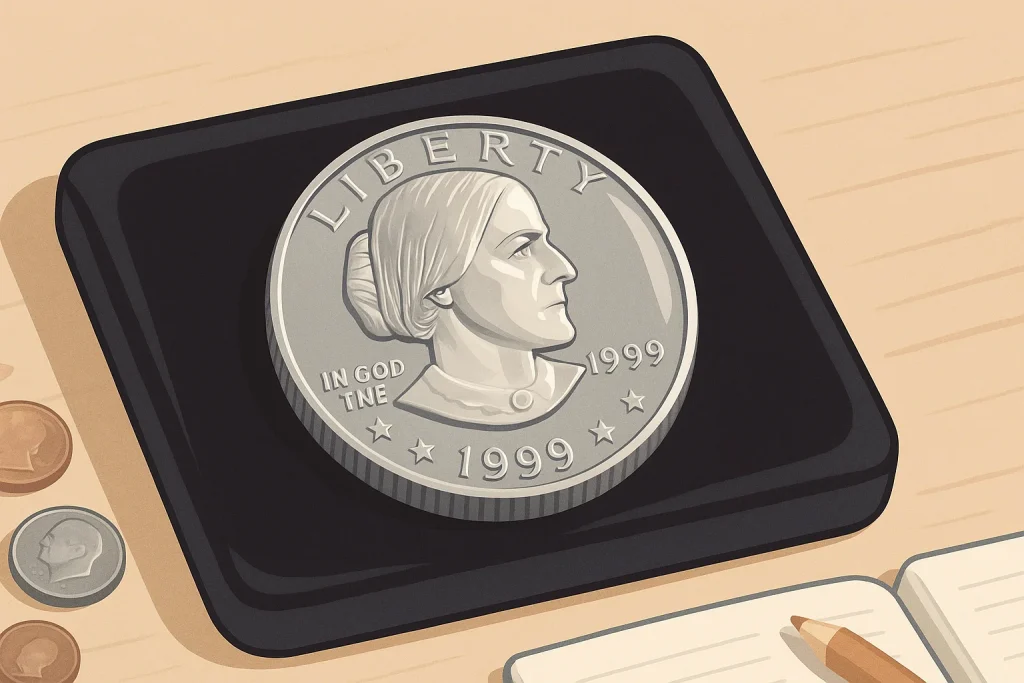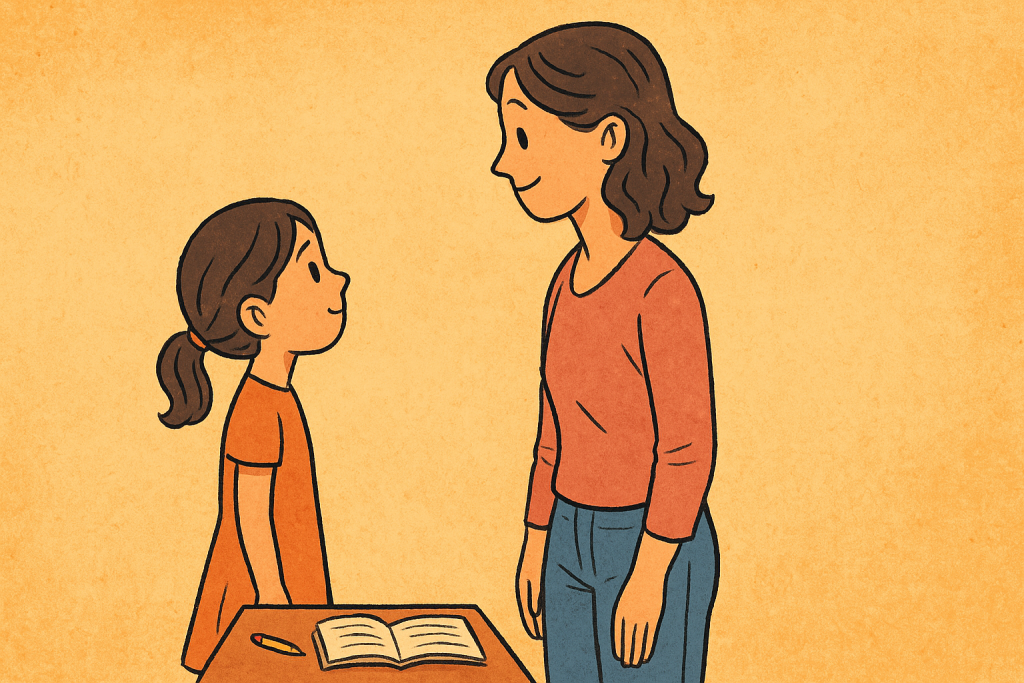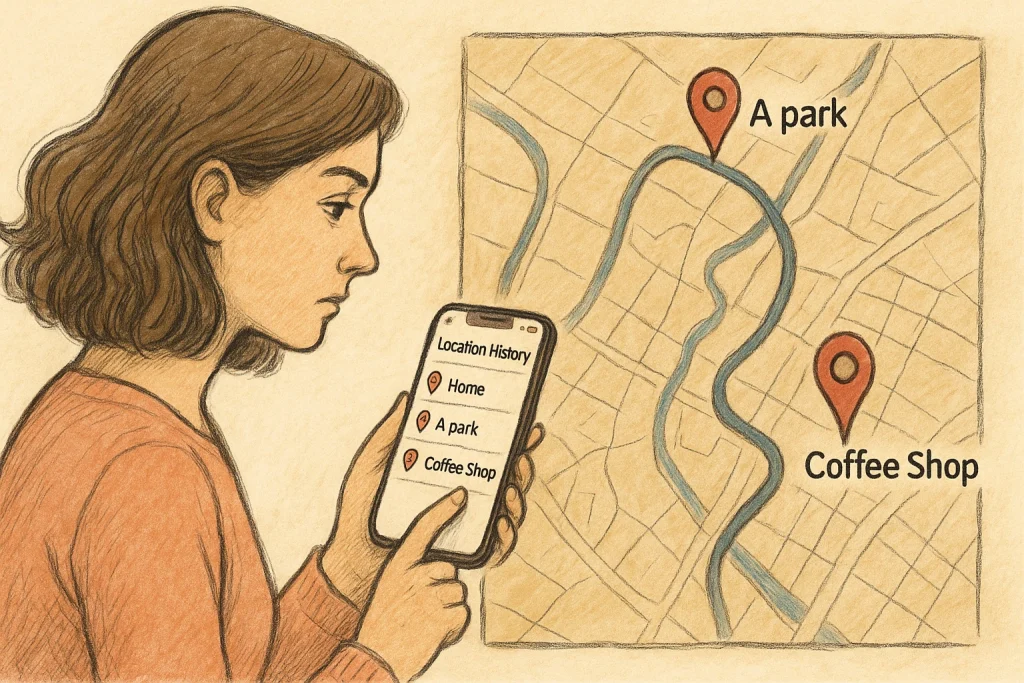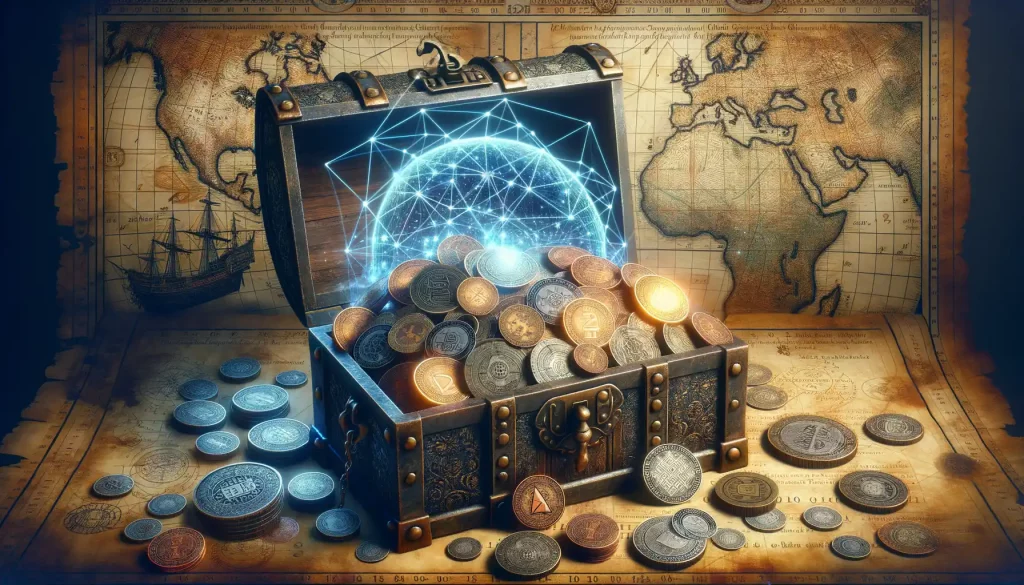Of all American coins, no coin is more legendary than the Susan B. Anthony silver dollar. It was the first minted coin to feature the portrait of an actual woman in place of a figurative representation. Although production did not last long, the 1979 silver dollar value has collectors’ imaginations running wild.

Origins and Design Highlights
The SBA dollar was created in 1979 to replace the bulky Eisenhower dollar. The idea was simple: create a smaller, lighter, easier-to-use coin that could be used on a daily basis. It also needed adjustments for vending and transit machines. But the result wasn’t ideal.
Design and composition:
- Obverse: Frank Gasparro’s portrait of Susan B. Anthony, 13 stars surround it.
- Reverse: Apollo 11 mission insignia, same as at the Eisenhower dollar series.
- Composition: Copper-nickel clad, not silver as commonly thought. It weighed 8.1 grams and with a diameter of 26.5 mm.
The coin was artistically sound, but physical similarity to the Washington quarter made it uncomfortable to use, as they were identical in color and almost identical size The coin never gained widespread use, but it remained in vending systems and in coin collections.
Notable Varieties and Collector Favorites
For coins that were only around for a few years, the Susan B. Anthony dollar offers amazing variety. Subtle differences in rim spacing, mint marks, and strike quality distinguish common circulation coins from rare collector’s treasures.
1. 1979-P Wide Rim (Near Date)
Arguably the most popular SBA variety, the 1979-P Wide Rim — also known as the Near Date — was produced at the Philadelphia Mint during the first year of coin production. The date on this coin is placed closer to the rim, and there is a correspondingly narrower space between the numbers and the coin’s edge.
Why it matters: It was produced in smaller quantities before the design was shifted mid-year.
Rarity and value: While common SBA dollars trade at face value, this variety commands $100–$300 in high uncirculated grades and can exceed $1,000 when certified MS67 or higher.
Tip for identification: Compare spacing between the “1” in the date and the rim — the Wide Rim has tighter proximity.
2. 1981-S Type 2 Proof
By the year 1981, the SBA dollars were only being minted by the Mint in proof collector sets, and therefore they were automatically rarer. The 1981-S Type 2 Proof stands out due to the distinct, clear “S” mintmark of the San Francisco Mint replacing the blob-like “filled S” on earlier proofs.
Why collectors want it: This coin was minted in small quantities and features mirror-like fields and unusually high detail.
Value range: Typically $60–$120 depending on grade, but PR70 Deep Cameo coins have sold for several hundred.
Fun fact: It is the final proof coinage leading up to the series ending — until its brief reissue nearly two decades later.
3. 1999 Revival Issues — P and D Mint Marks
Back by nearly twenty years, the Susan B. Anthony dollar returned in 1999 unexpectedly. The U.S. Mint reissued the design to meet demand for dollar coins being used in mass transit systems and vending machines before the Sacagawea dollar was released in 2000.
Flips included: Philadelphia (P) and Denver (D).
Mintage: Around 29 million total, so less rare but very symbolic as the series finale.
Collector note: MS67+ condition coins are further in demand, especially mint-set and full-roll coins struck sharply with excellent luster.
4. Important Mint Errors
Error coins in the SBA dollar series do exist but are few. Their scarcity most often stems from the shorter production time and improved minting quality of late 20th-century coins.
Most famous SBA dollar errors are:
- Off-center strikes: Design distinctly off-center; values range from $100–$500 depending on severity.
- Clipped planchets: Part of a curved cut, often available for purchase at $150–$400.
- Double dies: Doubling of legends like “LIBERTY” or “IN GOD WE TRUST.”
- Missing clad layer: Reveals copper core under the surface — one of the most spectacular and desirable SBA errors.
Collectors often verify such mismatches with close-up magnification or advanced photo-based analysis with Coin ID Scanner, which can instantly compare a coin against official reference pictures and pick up on possible die variations.
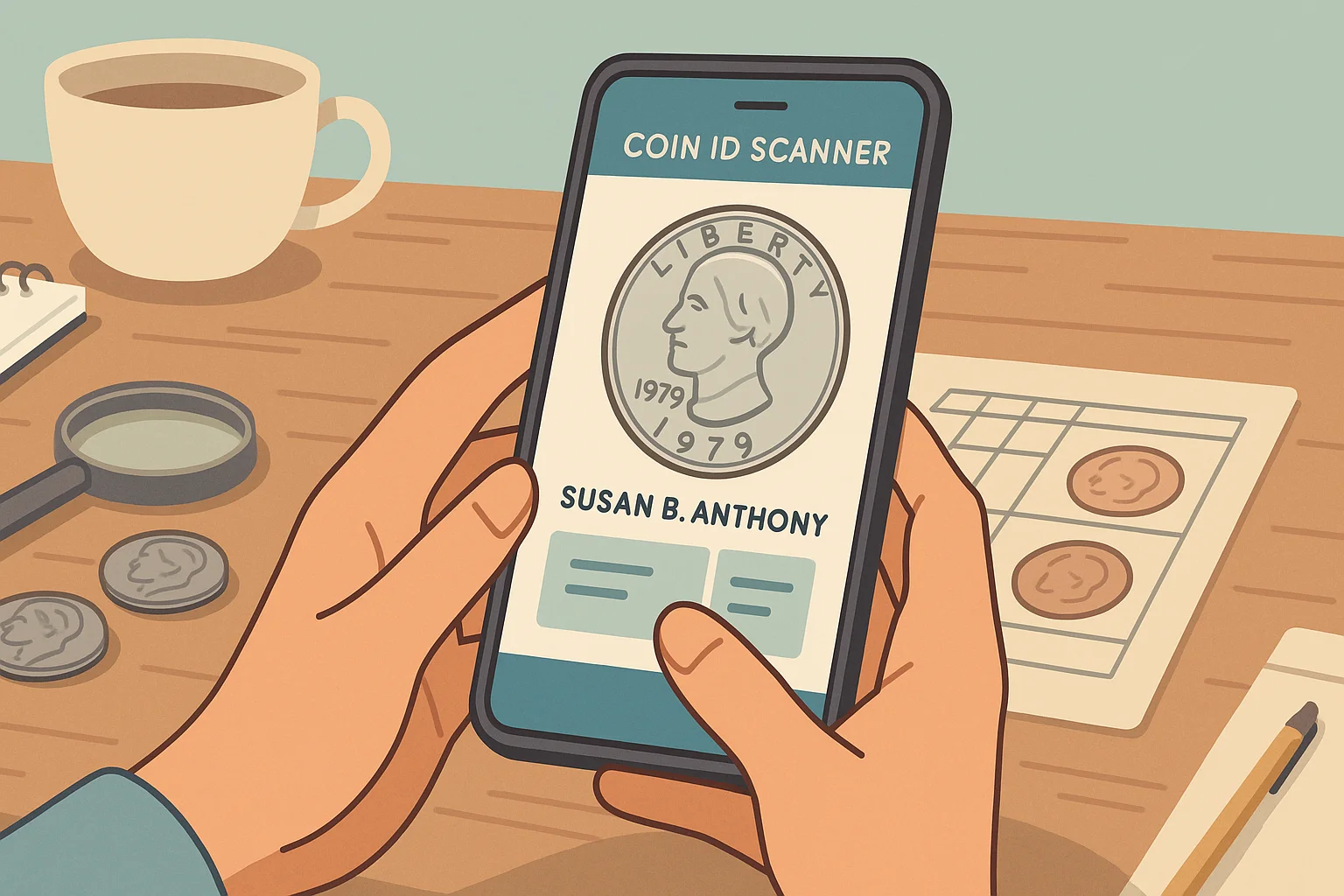
How to Identify, Authenticate, and Value Susan B. Anthony Dollars
It’s one thing to have a Susan B. Anthony dollar in your collection — it’s something else to have any idea of its true worth. With several mint varieties, subtle design differences, and rare production flaws, proper identification and grading are essential to the value of a coin.
1. Start with Mint Marks and Design Details
Step one to figuring out any SBA dollar is knowing where and how it was made. Each mint mark says a lot, from the most common Philadelphia to rare Denver and proof-level San-Francisco.
How to check it all? A pocket magnifying glass is enough for surface inspection, but the majority of collectors use smartphone camera photos with high resolution complemented by apps like Coin ID Scanner that can automatically inspect rim width, mint marks, and surface design.
2. Examine Coin Condition — The Pricer
Condition determines the progression from a $1 coin to a $1,000 collector’s item. Even in the same year and mint, small differences in wear and luster have profound effects on price.
SBA dollar grading basics:
- Circulated (XF–AU): Light wear, minor flattening of hair and lettering. Close to face value.
- Uncirculated (MS60–MS64): Cleaned surfaces, full luster. $5–$20 average.
- Gem Uncirculated (MS65–MS67): Sharp strike, bright brilliance, few contact marks. $100–$300 depending on year.
- Proof (PR69–PR70 Deep Cameo): Mirror-reflection fields, frosted relief, with no visible flaws. $150–$400+.
PCGS or NGC professional grading ensures uniform grading and often enhances resale value. For quick personal assessments, Coin ID Scanner provides side-by-side comparisons to certified pieces for accurate initial estimations.
3. Identify and Authenticate Rare Errors
Error coins within the SBA series are rare but lucrative. Before assuming a coin is unique, confirm authenticity through weight, diameter, and visual reference.
Tips for verifying errors:
- Compare to reference weights: normal SBA dollars weigh 8.1 g.
- Look for clean edges — clipping, misalignment, or layering issues should be distinct.
- Examine inscriptions for doubling or faint repetition.
- Use digital comparison tools or reference guides to match error locations precisely.
The Coin ID Scanner app simplifies this process. Its database contains image-based matching that identifies potential errors even when just barely visible to the naked eye.
4. Track Real Market Prices
Prices on coins fluctuate with collector demand and recent auction results. Relying solely on printed guides can cause underpaying or overpaying.
Reputable sources of up-to-date values:
- PCGS and NGC price trackers: Offer certified population numbers and real-time estimates.
- Heritage Auctions and Stack’s Bowers: Offer sale confirmations.
- CoinValueChecker and APMEX: Display retail price ranges.
Since collectors have more than one coin, organization online is crucial. Coin ID Scanner app allows you to build a virtual catalog where you can add a photo, grade, and price history for each coin.
The SBA dollar is a testimony that new coins can achieve their premium value — when discovered, preserved, and appreciated with precision. What was once a misinterpreted trial has become a useful measure of progress, fairness, and U.S. craftsmanship worth preserving.
